Each evening, Marrakesh’s medina transforms into a culinary theater, where the aroma of grilled meat mingles with mint tea and the sound of tagine lids being lifted reveals treasures that have been simmering for hours. The city’s food scene operates on ancient rhythms — vendors know exactly when to fire up their grills, when to start the slow-cooked stews, and when the evening crowds will descend seeking authentic flavors that can’t be replicated elsewhere.
The Red City’s geographic position at the crossroads of Africa, Europe, and the Middle East created a cuisine that draws from multiple traditions while maintaining its distinctly Moroccan identity. Here’s a list of 15 Moroccan dishes that reach their full potential only when experienced in Marrakesh’s bustling souks and hidden riads.
Tagine
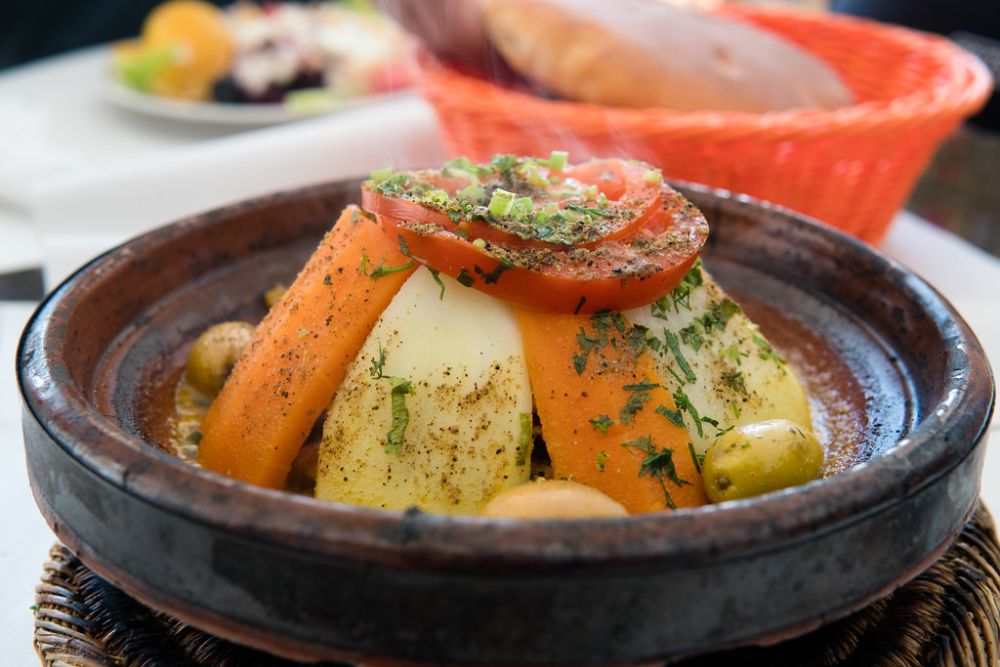
The cone-shaped clay pot that gives this dish its name creates a unique cooking environment where ingredients steam in their juices, developing flavors that modern cookware simply can’t achieve. Marrakesh’s tagine masters have perfected the art over generations, knowing exactly how much charcoal to use and when to adjust the heat.
The chicken and preserved lemon version showcases the city’s mastery of balancing tart and savory elements, while the beef and prune combination demonstrates how Moroccan cuisine transforms simple ingredients into something extraordinary. The clay pots themselves are made from local earth, adding a mineral quality to the food that connects each bite to the landscape.
Mechoui
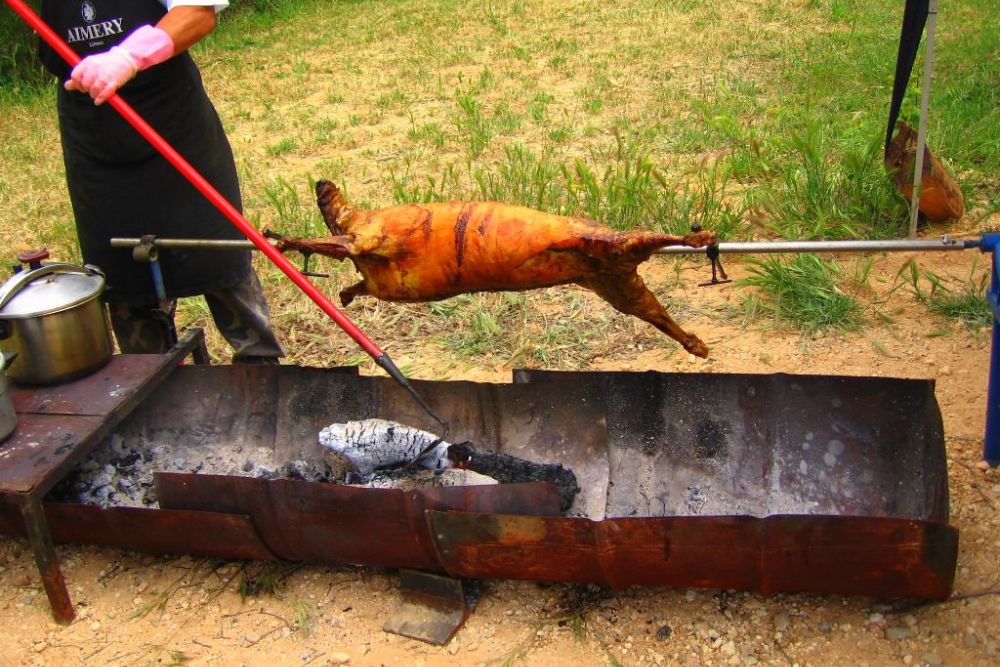
This whole roasted lamb represents Marrakesh’s most theatrical dining experience, with entire animals slow-roasted in underground ovens that have been firing continuously for decades. The meat emerges so tender it falls off the bone, seasoned with nothing more than salt and local herbs that somehow create incredible depth of flavor.
Traditional mechoui restaurants in the medina serve the lamb on communal tables where strangers become friends over shared plates and mint tea. The cooking process takes most of the day, making it impossible to rush — you eat mechoui on Marrakesh’s schedule, not your own.
Like Travel Pug’s content? Follow us on MSN.
Couscous
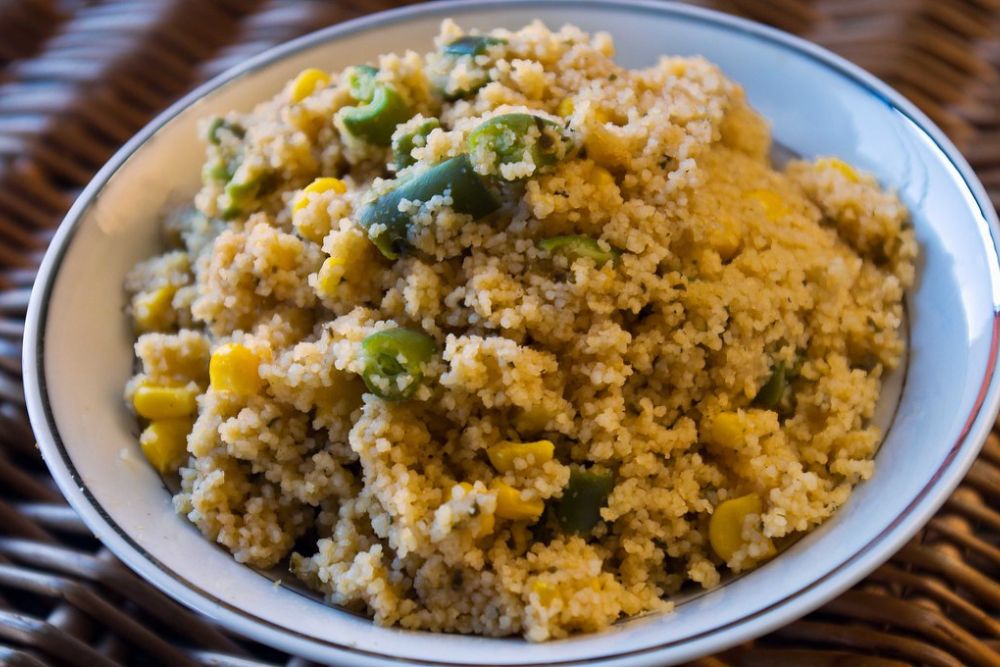
Friday couscous in Marrakesh follows rituals that connect modern diners to centuries of tradition, with families gathering in riads where the grain is hand-rolled and steamed in special pots called couscoussiers. The tiny pearls of semolina absorb the complex broth from whatever vegetables and meat are layered above, creating a dish that’s both humble and sophisticated.
Seven vegetables typically crown the couscous, each contributing different textures and flavors that merge into something greater than the sum of its parts. The steaming process requires patience and skill that restaurant chains can’t replicate, making authentic couscous a distinctly Moroccan experience.
Pastilla
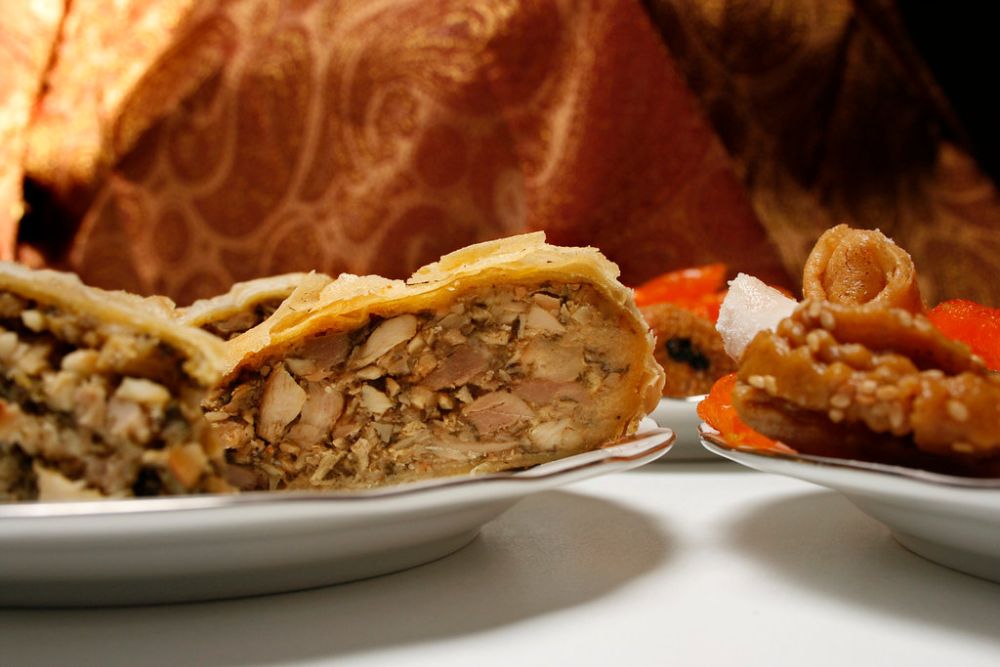
This sweet and savory pie represents Moroccan cuisine at its most refined, with layers of paper-thin pastry encasing spiced pigeon or chicken mixed with almonds, eggs, and cinnamon. The contrast between the crispy exterior and the complex filling creates textural drama that unfolds with each bite. Marrakesh’s pastilla masters guard their techniques carefully, passing down methods for achieving the perfect balance between sweet and savory elements.
The dish requires hours of preparation and skilled hands to create the delicate layers, making it a special occasion food that marks celebrations and important gatherings.
Harira
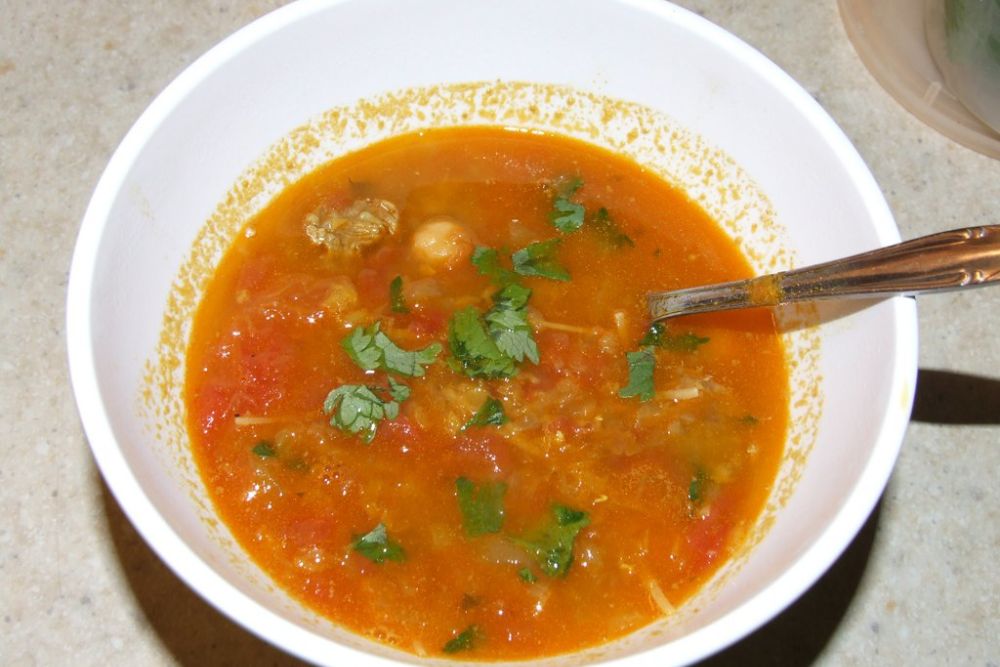
This hearty soup serves as Marrakesh’s unofficial comfort food, appearing on every table during Ramadan but enjoyed year-round in the medina’s countless small restaurants. The combination of lentils, chickpeas, tomatoes, and meat creates a protein-rich base that’s enhanced with fresh herbs and a squeeze of lemon.
Traditional preparation involves slow cooking that allows the flavors to meld completely, while the final addition of beaten egg creates a silky texture that makes each spoonful satisfying. Street vendors ladle harira from large pots that have been simmering all day, serving it with dates and chebakia pastries that provide the perfect flavor contrast.
Like Travel Pug’s content? Follow us on MSN.
Tanjia
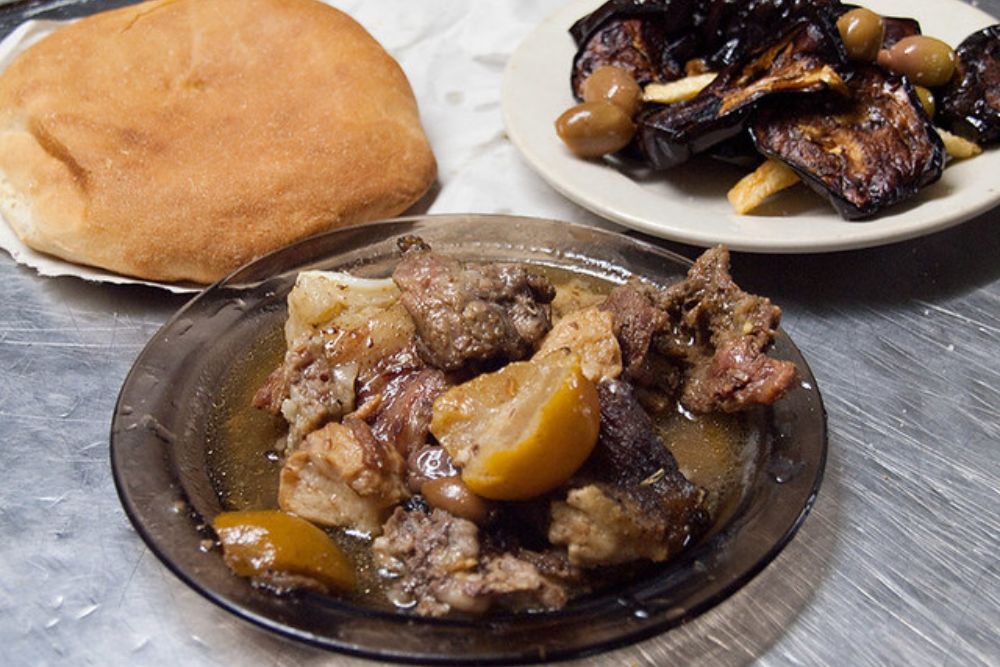
Marrakesh’s bachelor dish gets its name from the clay pot used for cooking, which is sealed and slow-cooked in the dying embers of public bath ovens throughout the medina. The meat — usually lamb or beef — marinates in preserved lemons, garlic, and ras el hanout spice blend before spending hours in the gentle heat.
The result is incredibly tender meat infused with complex flavors that develop only through this traditional cooking method. Modern restaurants struggle to replicate Tanjia’s authentic taste because the dish requires the specific heat and timing that only the medina’s ancient ovens can provide.
Kefta Tagine
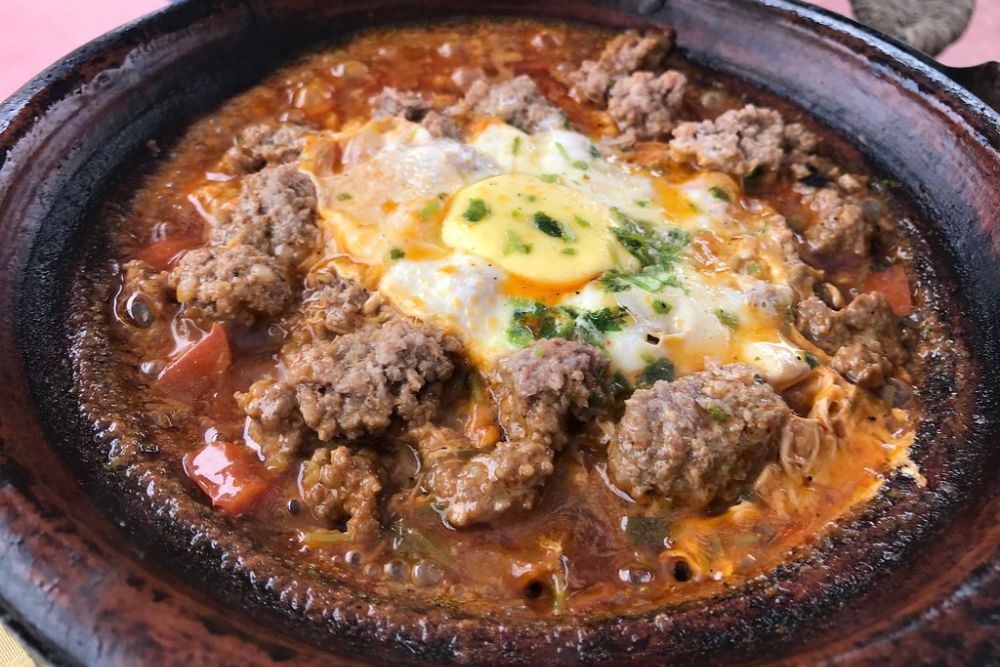
These spiced meatballs swimming in rich tomato sauce represent Moroccan comfort food at its finest, with the tagine’s shape creating the perfect environment for melding flavors. The meat mixture combines ground lamb or beef with fresh herbs, onions, and spices that vary slightly from family to family but always include generous amounts of parsley and cilantro.
Eggs are usually separated into the sauce towards the end of the cooking process, making protein-rich pockets that can soak up the flavors around them. This dish is widely popular in the Marrakshi household and economical enough to feed a whole crowd, which makes it ideal for homes and restaurants alike.
Rfissa
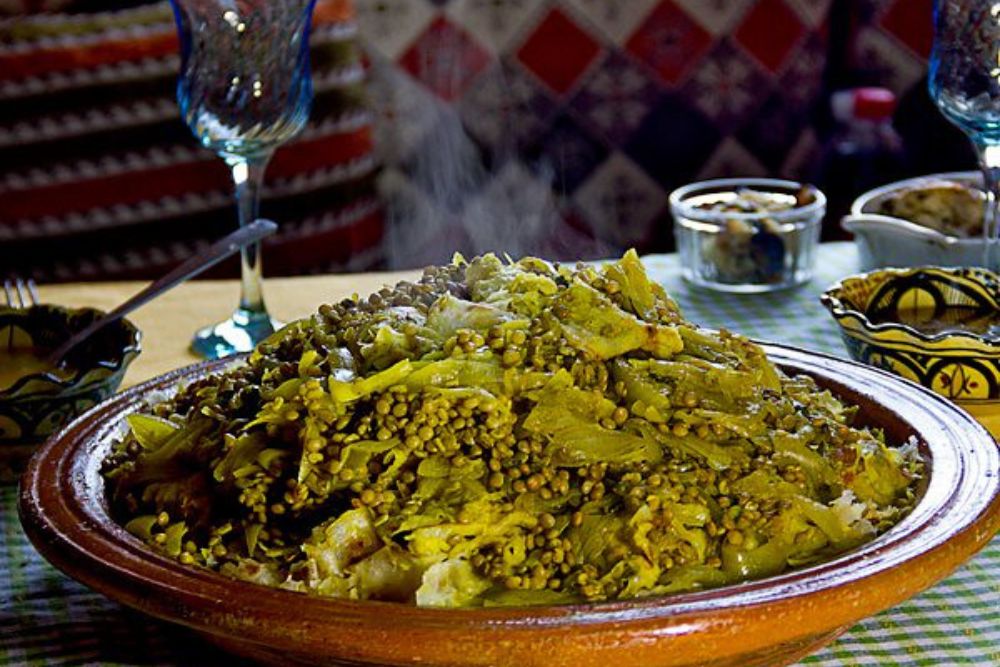
This ceremonial dish typically appears at special occasions, featuring shredded chicken served over a bed of thin, noodle-like pastry called trid that’s been soaked in rich, spiced broth. The preparation requires multiple steps and considerable skill, with the trid pastry rolled paper-thin and cooked separately before being combined with the chicken and sauce.
Fenugreek gives refissa its distinctive flavor, while the combination of textures — soft pastry, tender chicken, and aromatic broth — creates a deeply satisfying eating experience. Marrakesh’s traditional preparation methods ensure that each component maintains its character while contributing to the overall harmony of the dish.
Like Travel Pug’s content? Follow us on MSN.
Zaalouk
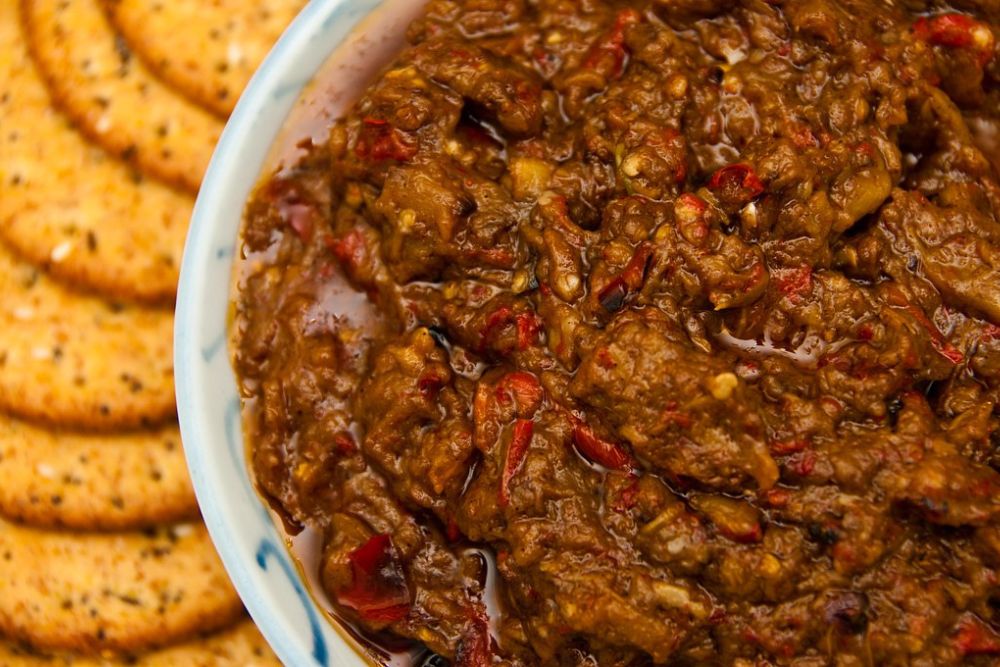
This cooked eggplant salad represents Moroccan cuisine’s vegetarian side, with the eggplant charred over open flames before being mixed with tomatoes, garlic, and olive oil. The smoky flavor from the charring process gives zaalouk its distinctive taste, while the slow cooking allows the vegetables to break down into a rich, chunky consistency.
Traditional preparation involves cooking the mixture until it reaches the perfect balance between liquid and solid, with each ingredient maintaining its character while contributing to the overall harmony. The dish serves as both a side dish and a main course when accompanied by fresh bread, making it a versatile addition to any Moroccan meal.
Bissara
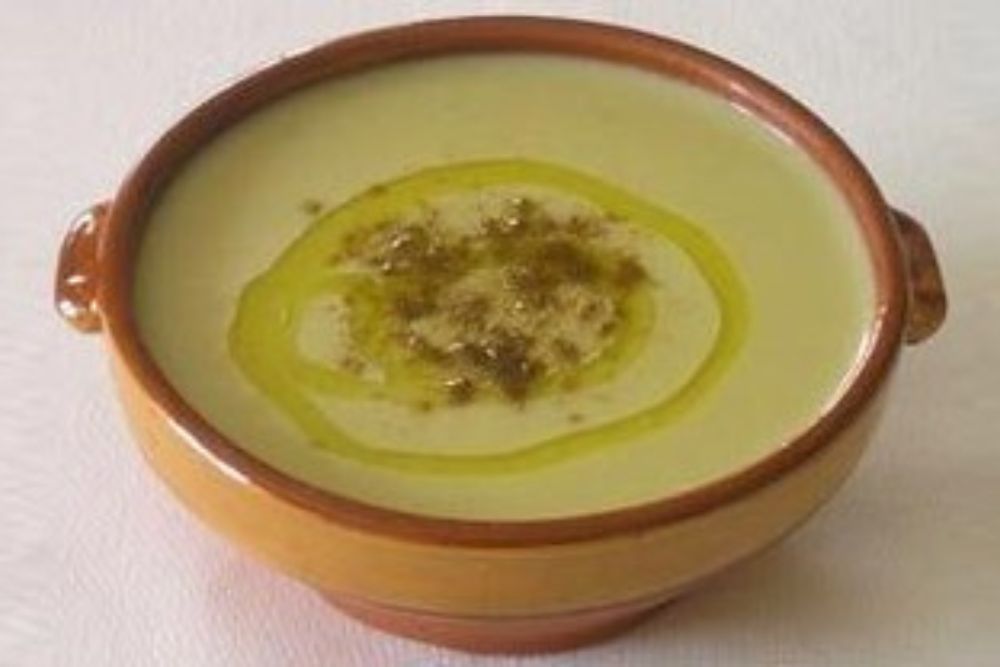
This humble fava bean soup transforms simple ingredients into something deeply satisfying, with dried beans cooked until they break down into a smooth, creamy consistency. The soup gets its distinctive flavor from generous amounts of olive oil, garlic, and cumin, while fresh herbs added at the end provide brightness and color.
Traditional preparation involves soaking the beans overnight and cooking them slowly until they reach the perfect consistency, a process that requires patience and attention. Street vendors throughout Marrakesh serve bissara from large pots, ladling it into bowls and topping it with olive oil, cumin, and fresh bread for dipping.
Makouda
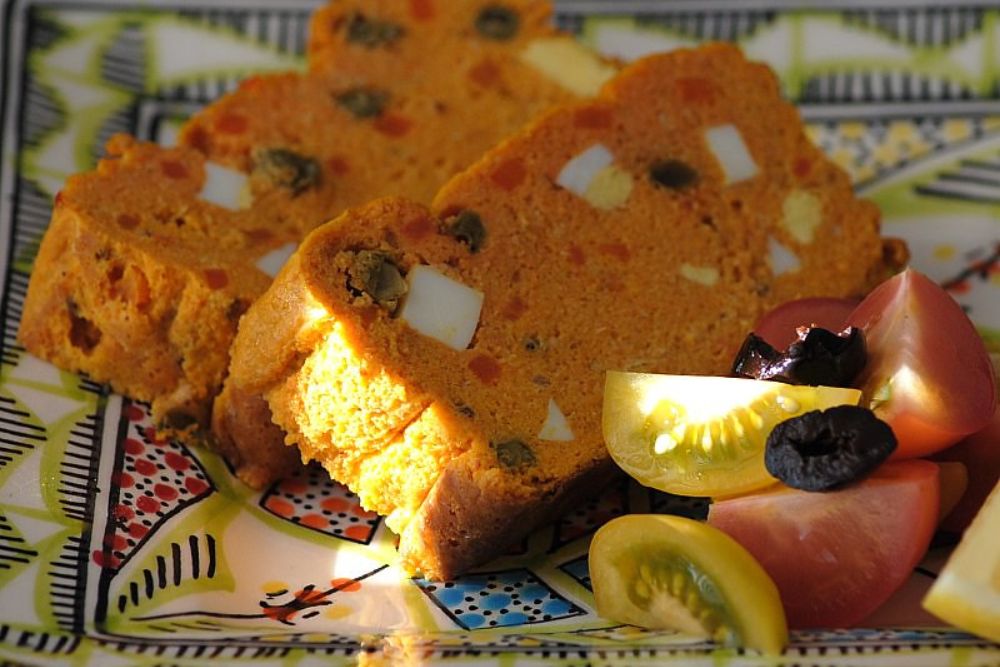
These potato fritters represent Marrakesh’s answer to comfort food. Boiled potatoes are mashed with herbs, shaped into patties, and deep-fried until golden. The exterior develops a crispy crust while the interior remains fluffy and flavorful, creating a textural contrast that makes them irresistible.
Traditional preparation involves seasoning the potato mixture with parsley, cilantro, and spices before frying them in oil that’s been heated to the perfect temperature. The fritters are typically served hot from the oil, often accompanied by harissa or other spicy condiments that complement their mild flavor.
Like Travel Pug’s content? Follow us on MSN.
Chebakia
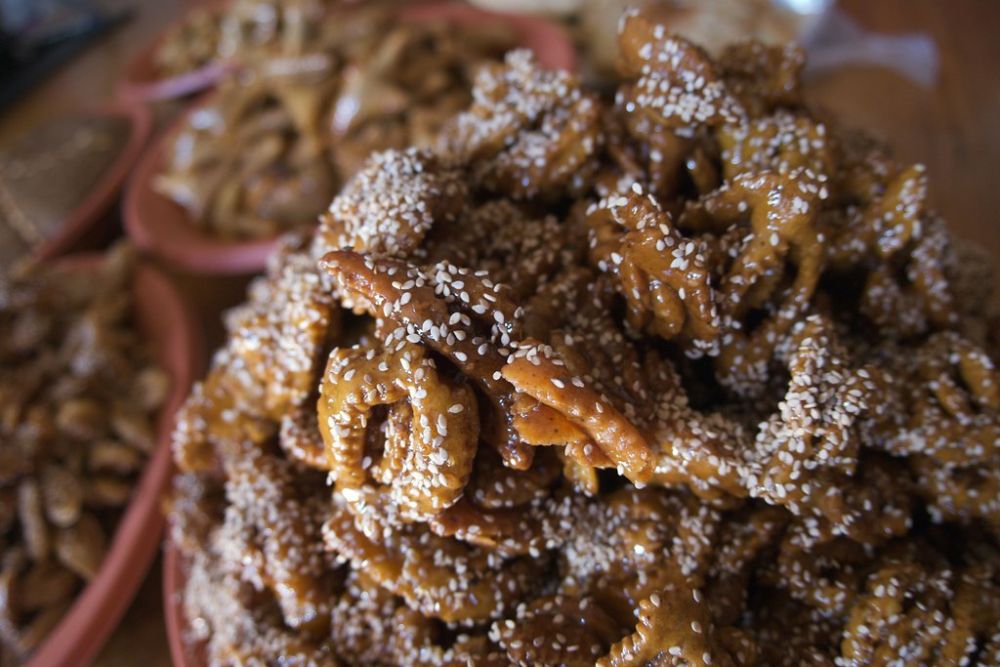
These flower-shaped pastries represent Moroccan dessert-making at its most intricate, with strips of dough twisted into complex patterns before being deep-fried and soaked in honey. The preparation requires considerable skill to achieve the delicate, lacy appearance that makes chebakia so visually striking. Traditional recipes include orange blossom water and sesame seeds, which add fragrance and texture to the finished pastries.
The combination of crispy exterior and honey-soaked interior creates a sweet treat that’s indulgent and surprisingly light, making it perfect for ending a heavy meal.
Sellou
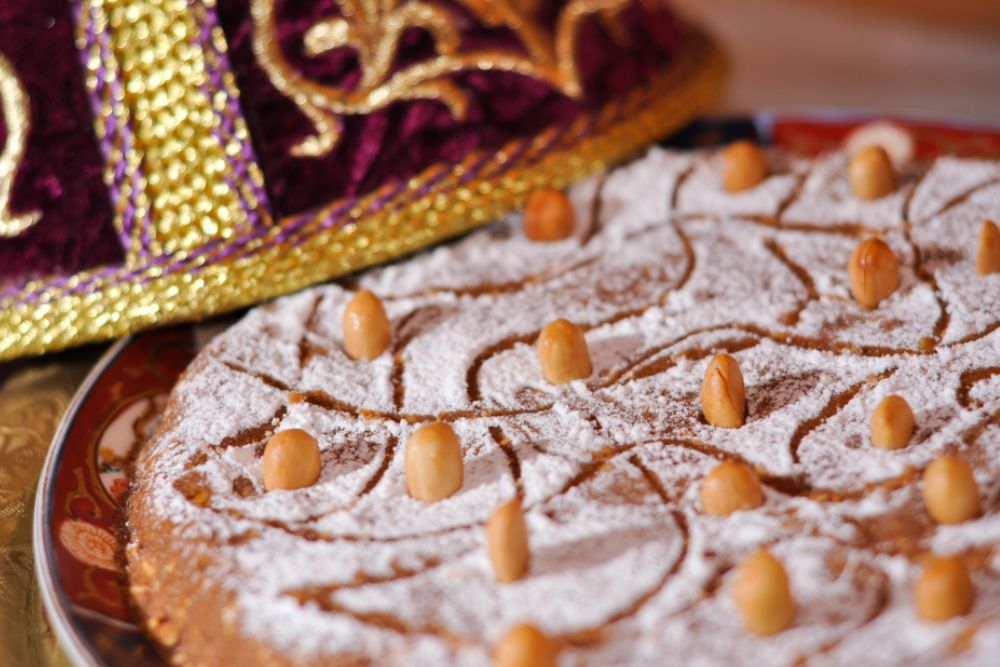
This traditional energy mix combines roasted almonds, sesame seeds, and flour with honey and argan oil to create a nutritious paste that’s both filling and flavorful. The ingredients are ground together to create a smooth consistency that can be eaten with a spoon or spread on bread. Traditional preparation involves roasting each component separately to achieve the perfect balance of flavors and textures.
The mixture provides sustained energy while delivering complex flavors that develop as you eat, making it popular among travelers and workers who need portable nutrition.
Khlea
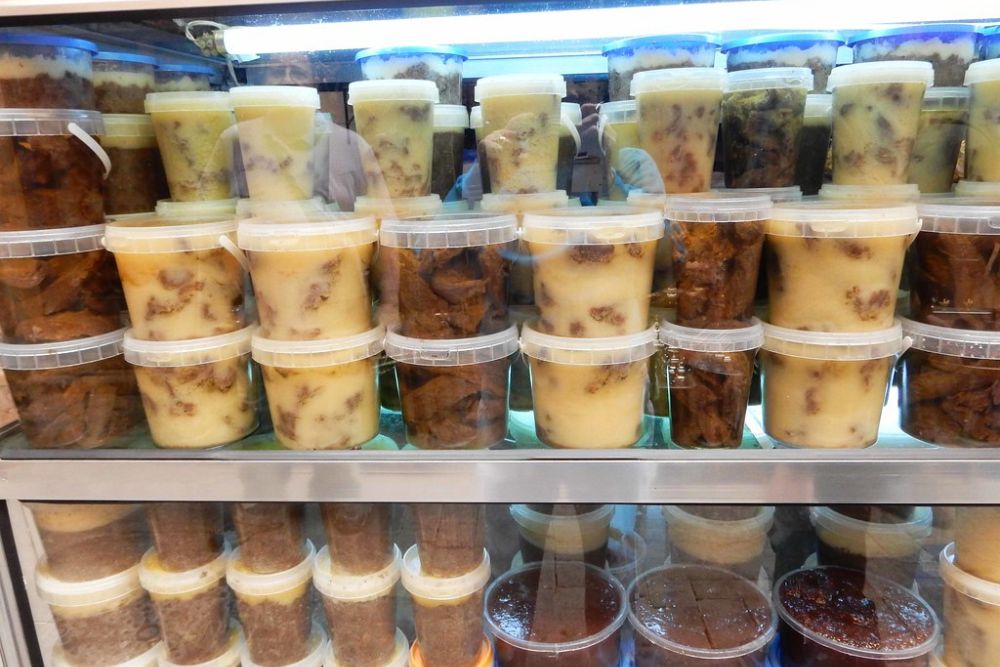
This preserved meat represents one of Morocco’s oldest food preservation techniques, with strips of beef or lamb dried and seasoned with coriander and salt. The preservation process concentrates the meat’s flavors while extending its shelf life, creating an ingredient that adds depth to countless dishes. Traditional preparation involves hanging the meat in cool, dry places until it reaches the perfect texture — firm but not brittle.
The preserved meat can be eaten on its own or used as a flavoring agent in other dishes, making it a versatile addition to the Moroccan pantry.
Like Travel Pug’s content? Follow us on MSN.
Msemen
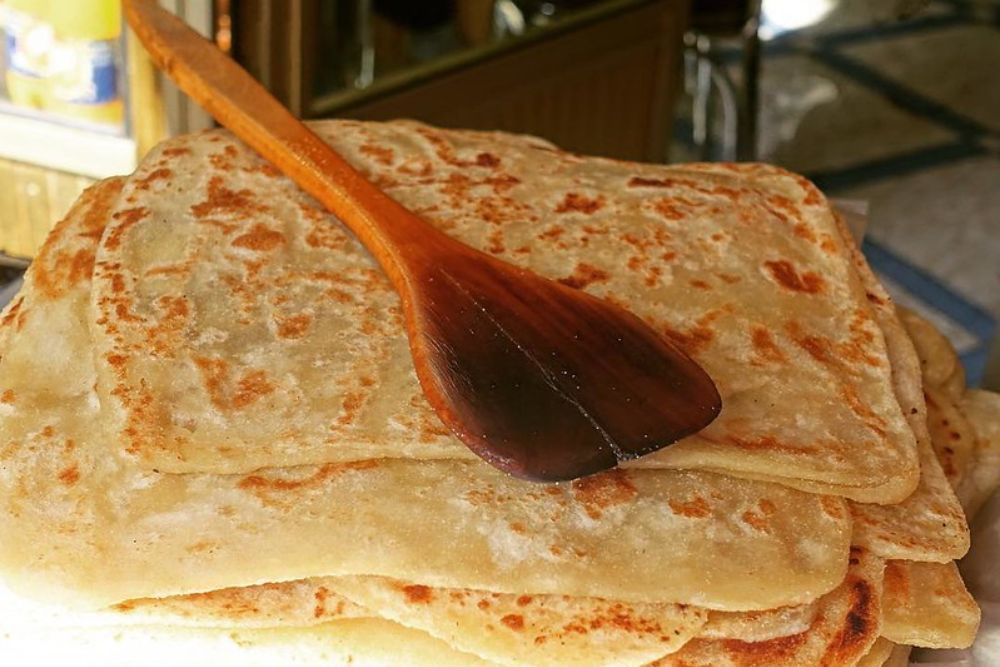
These flaky, layered flatbreads showcase the skill of Moroccan bakers, with paper-thin dough stretched and folded multiple times before being cooked on a griddle. The layering process creates a bread that’s crispy on the outside and tender on the inside, with distinct layers that separate when you bite into them.
Traditional preparation involves working the dough by hand to achieve the proper elasticity, then stretching it until it’s nearly transparent before folding and cooking. The bread serves as both a vehicle for other foods and a delicious accompaniment to mint tea, making it an essential part of the Moroccan dining experience.
Where Tradition Meets Your Plate
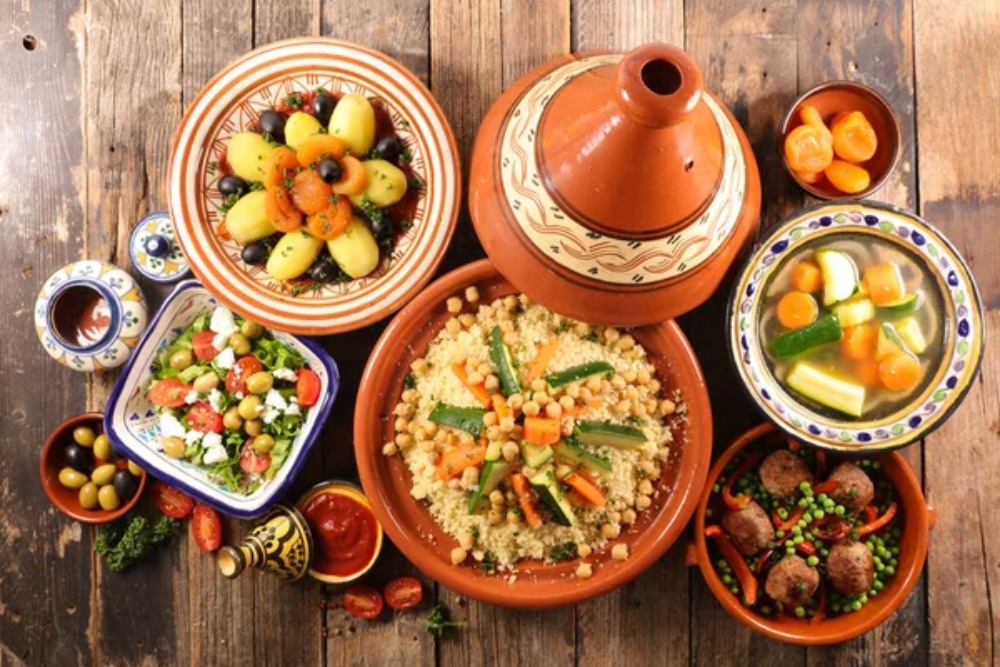
These dishes prove that Marrakesh’s culinary reputation isn’t just about exotic spices and tourist appeal — it’s about techniques and traditions that have been refined over centuries to create flavors that can’t be replicated elsewhere. Each recipe represents generations of knowledge passed down through families and refined in the medina’s kitchens, where the right ingredients, proper equipment, and skilled hands combine to create something magical.
The city’s food scene continues to evolve while maintaining its connection to ancient traditions, ensuring that every meal becomes a link to Morocco’s rich culinary heritage.
More from Travel Pug

- 20 Best Beach Towns in the Carolinas
- 13 Destinations Where Tourists Regularly Regret Their Trip
- 20 Things You Actually Get in First Class
- 20 Small Airports With Aviation Museums
- 20 Places in the U.S. That Are Perfect for a Reset Trip
Like Travel Pug’s content? Follow us on MSN.
